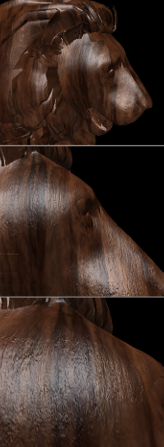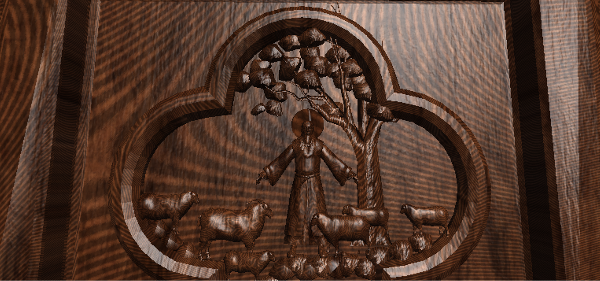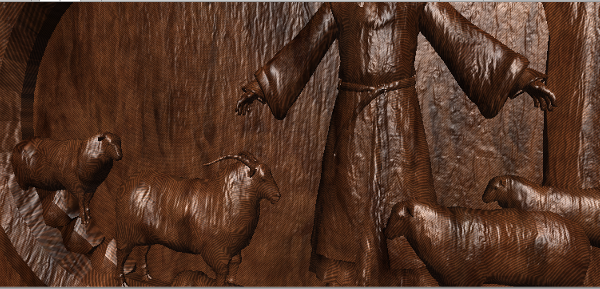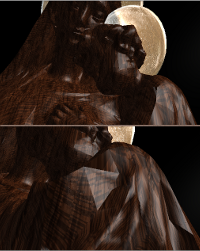Article : Wood Surface Effects 
MHDB Article ID: WSE20201019
MHDB Article date: 19 October 2020
MHDB Article Author(s): Staff
MHDB Wood Surface Effects
|

One of the features of the Medieval History Database is a
standalone software project which can render 3D models of specific medieval buildings, artwork, and the like. In order to produce
as much detail
as possible to create a more realistic appearance, this software is designed to overcome some of the normal limitations of 3D rendering. Most 3D software allows the video
card to blur out surface textures as the viewer gets closer, since video cards
are programmed to do that by default; but this project's software adds tiny
details such as wood grain, miniscule bumps,
dents, scratches, and the like, thereby increasing the detail as the viewer gets closer
rather than the reverse (see the sequence of screenshots at right, which show a sculpture
of a lion's head with individual bumps and nicks becoming visible as the software zooms in
closer).
Some years ago the software was modified to have the capability of replacing the usual flat "textures"
(2D images that are overlaid on the surface of 3D geometry), instead using
fully volumetric patterns that can be generated on-the-fly and treated as if they
extend through an entire object's volume. This is especially useful for wood,
marble, and other materials that have volumetric patterns in real life. For example, below
is a screenshot of a wooden relief carving using this graphics technique:

|
|
Closeup:

|

The images at right show an early test of a new method of generating the "textures"
that are used to add details on the surfaces of objects. This method uses
pixel shaders (programs that run within the video card and operate on every pixel [dot
of color] on the surface of a polygon) to mathematically generate patterns - in this
case, wood grain - based on the X,Y,Z coordinates so that the wood grain realistically
extends through the entire block of wood. This mimics what occurs in nature, which
can result in greater realism. It also means that there is no longer any
need to try to cover complex geometric surfaces with a flat graphic image, which never
works very well and is extremely time-consuming (imagine trying to wrap wallpaper around
a statue or other complex object). Procedural generation also reduces
memory consumption since there\'s no longer any need to store so many images within the
video card.
|
|
|